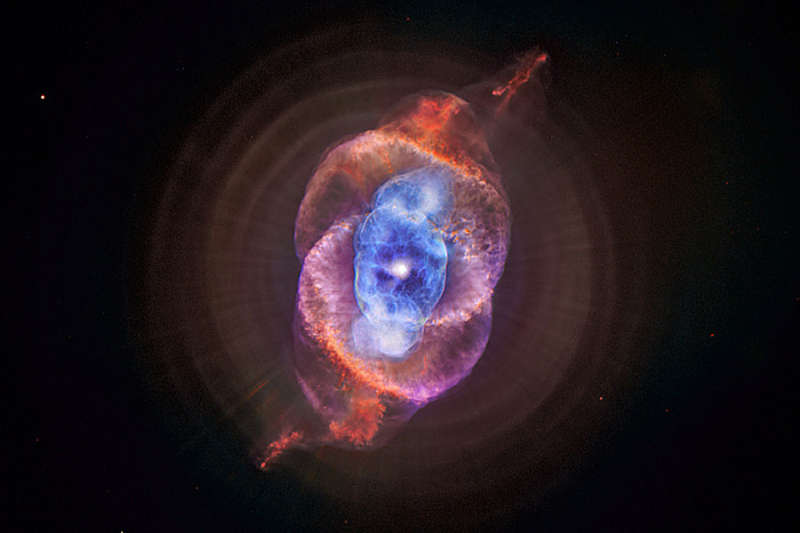Explanation: Haunting patterns within planetary nebula NGC 6543 readily suggest its popular moniker -- the Cat's Eye nebula. Starting in 1995, stunning false-color optical images from the Hubble Space Telescope detailed the swirls of this glowing nebula, known to be the gaseous shroud expelled from a dying sun-like star about 3,000 light-years from Earth. This composite picture combines the latest Hubble optical image of the Cat's Eye with new x-ray data from the orbiting Chandra Observatory and reveals surprisingly intense x-ray emission indicating the presence of extremely hot gas. X-ray emission is shown as blue-purple hues superimposed on the nebula's center. The nebula's central star itself is clearly immersed in the multimillion degree, x-ray emitting gas. Other pockets of x-ray hot gas seem to be bordered by cooler gas emitting strongly at optical wavelengths, a clear indication that expanding hot gas is sculpting the visible Cat's Eye filaments and structures. Gazing into the Cat's Eye, astronomers see the fate of our sun, destined to enter its own planetary nebula phase of evolution ... in about 5 billion years.
1999 2000 2001 2002 2003 2004 2005 2006 2007 2008 2009 2010 2011 2012 2013 2014 2015 2016 2017 2018 2019 2020 2021 2022 2023 2024 2025 |
Январь Февраль Март Апрель Май Июнь Июль Август Сентябрь Октябрь Ноябрь Декабрь |
NASA Web Site Statements, Warnings, and Disclaimers
NASA Official: Jay Norris. Specific rights apply.
A service of: LHEA at NASA / GSFC
& Michigan Tech. U.
|
Публикации с ключевыми словами:
X-ray - Cat's Eye Nebula - planetary nebula - рентгеновские лучи - туманность Кошачий глаз - Планетарная туманность
Публикации со словами: X-ray - Cat's Eye Nebula - planetary nebula - рентгеновские лучи - туманность Кошачий глаз - Планетарная туманность | |
См. также:
Все публикации на ту же тему >> | |
